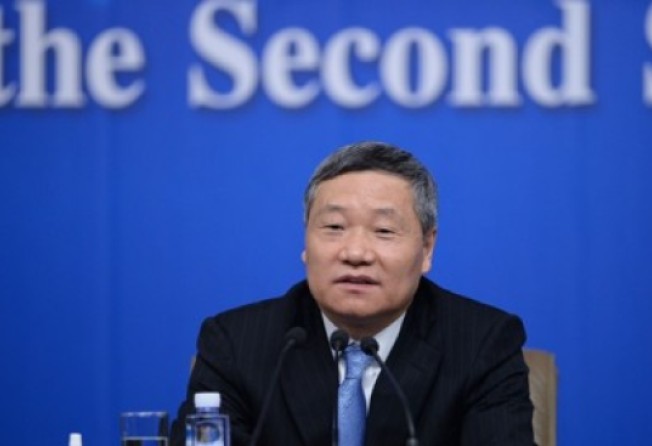Faulty ‘circuit-breaker’ blamed for regulator’s fall

Xiao Gang, who has been removed from office as head of the mainland’s securities regulatory commission, was doomed to lose his job after the failure of a circuit-breaking mechanism aimed at bringing calm to massively volatile trading on the nation’s stock markets, according to analysts.
Xiao, the former head of the China Securities Regulatory Commission, oversaw the introduction of the circuit breaker last month, only to see it withdrawn in failure after only four trading days.
The mechanism was designed to halt or suspended stock trading for the day if the share index swang more than five or seven per cent,.
But the system only created more frenzied selling among investors amid a slump in share prices.
“If you name one thing that reflects on Xiao’s term in office, it’s the circuit breaker,” said Hong Hao, chief China strategist at Bocom International in Hong Kong.
Hong said the design of the circuit breaker system was flawed as the range of fluctuations in the share index for the system to kick in was too narrow for it to be effective.
Xiao, 58, a seasoned banker and former chairman of the Bank of China, was appointed head of the regulatory commission in 2013.
During his three years at the agency, he championed a crackdown on insider trading, tried to overhaul the approval system for companies wanting to list on the stock exchange and backed the development of China’s third board market for small businesses.
However, he was also blamed for failing to forecast China’s stock market crash when leveraged funds poured into the bourses before the massive slump in share prices last summer.
He also took flak over the regulator’s efforts to stabilise the market during the rout, including suspending new company listings and ordering big shareholders not to sell their shares.
The moves were viewed by some critics as clumsy and sometimes counterproductive.
Hong said some of the criticisms made against Xiao were misplaced.
“To be fair, he did a lot of things connected with China’s financial reforms, including rolling out China’s first equity options and making it easier for small businesses to obtain finance by developing the third board market. It’s not an easy job for anyone in such a volatile market.”
Hong said Xiao had warned of the risks of an overheating stock market last April, before the share slump later that summer.
Li Daxiao, chief economist at Yingda Securities, also defended Xiao’s record.
“Xiao should not be the individual blamed for what happened, including the circuit breaker,” he said.
The sharp devaluation of the yuan and other factors including the slowing economy also had an impact on the market, said Li.
Additional reporting by Zhou Xin
Key points during Xiao’s leadership
August 2013: “Fat finger” trading error at China Everbright Securities created accidental order to buy 23 billion yuan (HK$27.4 billion) of shares and sent the main index on the Shanghai stock exchange soaring. China Everbright was later fined.
November 2014: Start of the Shanghai-Hong Kong Stock Connect share trading scheme.
November 2014: China overtook Japan to become world’s second largest stock market.
April 2015: Shanghai, Shenzhen stock exchanges trading turnover hits a record 1.53 trillion yuan.
June 2015: Shanghai Composite Index hits seven-year high.
June 2015: Regulator moves to curb margin lending and short selling.
June 2015: Shanghai Composite Index plunges over 7 per cent, down over 20 per cent from its peak earlier in the month.
July 2015: State Council orders securities regulator to suspend IPOs amid slump in share prices.
July 2015: State-owned China Securities Finance Corp starts to inject funds to bail out stock market amid falling prices.
July 2015: Regulator bans major shareholders from selling stakes in listed companies for six months in bid to halt rout.
August 2015: Shanghai Composite Index plunges 8.5 per cent, erasing all its gains in 2015.
November 2015: Regulator announces relaunch of IPOs.
January 2016: China’s stock markets begin use of circuit-breaker. mechanism to suspend trading if market rises or falls 5 per cent. Trading for day halted after swings of over 7 per cent.
January 2016: Regulators halt system after only four full trading days after officials admitted it had failed to calm markets and had heightened pressure to sell.